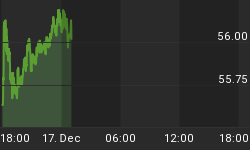Existing home sales came in a bit under Bloomberg Econoday Consensus, down 3.4% in October. Year-over-year trends are weakening.
Sales of existing homes are not a source of strength for the economy, down 3.4 percent in October to a slightly lower-than-expected annualized rate of 5.36 million. Year-on-year, sales are up only 3.9 percent which is the lowest for this reading since January. Weakness is split roughly even between single-family homes, down 3.7 percent in the month to a 4.75 million rate, and condos, down 1.6 percent to a 610,000 rate.
Lack of homes on the market, in a reflection of price weakness, remains a major factor holding down sales. Supply relative to sales is at 4.8 months, up slightly from the prior month but still below the 5.2 months of October last year. A reading of 6.0 months is considered a balanced market. The number of homes on the market, at 2.14 million, is actually below the 2.24 million this time last year, an unwanted surprise that the National Association of Realtors, which compiles the existing home sales report, calls "disturbing".
Price data for October are once again weak, down 0.9 percent for both the median (at $219,600) and the average (at $262,800). Year-on-year, the median is up 5.8 percent with the average up 3.4 percent.
Regional sales data show a sharp decline in the West, down 8.7 percent in the month for a year-on-year gain of 2.7 percent. The South, which is the largest housing region, also shows weakness, down 3.2 percent for only a 0.5 percent year-on-year gain. The Northeast and Midwest were little changed in October with year-on-year appreciation very solid for both, in the high single digits.
But the weakness in the West and the weakness in the South are not positive indications for the housing sector where moderate strength on the new home side of the market is being offset by weakness on the existing side.
Existing Home Sales Percent Change From Year Ago
October vs. September
In September, Existing Home Sales Rose 4.7% Following August's 5% Decline.
This is what Bloomberg said a month ago: "Existing home sales bounced back very strongly in September, up 4.7 percent to nearly reverse the prior month's revised decline of 5.0 percent, a decline that now looks like an outlier. The month's annual sales rate, at 5.55 million, is just beyond Econoday's top-end forecast and the second best reading of the recovery. The year-on-year percentage gain, at plus 8.8 percent, is back where it was during the sales gains of the spring."
If there was an "outlier", perhaps it was the September gain, not the August and October declines.
And even though September sales data bounced, prices didn't. The median price declined 2.9% in September.
Bloomberg concluded "This report, which wraps up a busy and mostly positive week for housing data, is a big plus for the housing outlook, suggesting that demand for existing homes may be catching up with demand for new homes."
I responded: "That last statement by Econoday is amusing. For starters, new home sales are not all that strong, and it is new home sales that contribute most to GDP and family formations."
As a followup, please note my November 18 article Housing Starts Plunge 11% to 7-Month Low: Single-Family Down 2.4%, Multi-Family Down 25%
October wiped away all of September's good news and then some. 1.060 million starts was far below Econoday Consensus Estimate of 1.162 million SAAR and also well below the lowest estimate of 1.125 million.
Bloomberg pointed out hidden strength including "important good news" on October permits.
Spotlight on Permits
- September month permits were down 5%
- October permits rose only 4.1%.
- September starts were revised lower from 1.206 million to 1.191 million (a 15,000 -1.24% negative revision).
In aggregate, that hardly looks like "important good news".
First Time Buyers Decline Third Year
The National Association of Realtors (NAR) notes First-time Buyers Fall Again in NAR Annual Buyer and Seller Survey.
"The share of first-time buyers declined for the third consecutive year and remained at its lowest point in nearly three decades as the overall strengthening pace of home sales over the past year was driven more by repeat buyers with dual incomes."
Housing Clearly Weakening
On average, starts are weakening, permits are weakening, new home sales are weakening, price data is weakening, and existing home sales are weakening.
First time buyers, a strong indication of family formation, is at a three-decades low, and the NAR is "disturbed" about trends.
Simply put, housing is weakening, albeit it in a volatile way, making it a bit harder to spot the change in underlying trends.
















